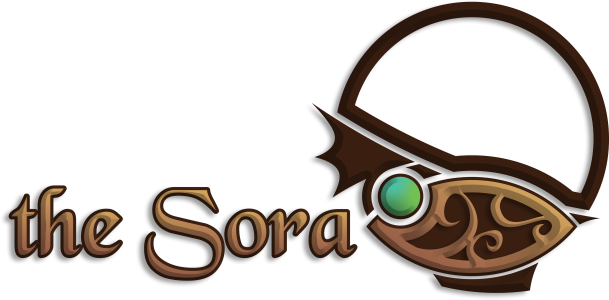The
sinborn, also known as
tieflings, are sapient mortals who carry the blood of
demons in their veins. Sinborn exist across the
Sora, though they are relatively rare. Similarly, there have been examples of sinborn found among most sapient species, with those rare few exceptions being species which have very few numbers. Sinborn largely resemble their parent species, though they always have at least one feature that sets them apart, such as unusually colored eyes, a tail, horns, eyes, scales, razor-sharp teeth, or something similar. Sinborn are often treated poorly, as their demonic heritage engenders distrust in most societies.
Origin
Sinborn can arise in two different ways; either through demonic ancestry or from the absorption of demonic energies.
Demons do not often copulate with mortals and such relationships rarely result in children. However, children do occasionally occur, producing cambions, who inherit many of the powers of their demonic parent. Cambions are far more likely to procreate with mortals, with their children being normal mortals in all senses save for their demonic heritage. The blood of the demon continues to flow through their veins, however, and they will pass it on to their children, and their children's children, and their children's children's children, and so on for generations.
Any of those born with the blood of a demon has a chance to be a sinborn, though the exact percentage is an open question as tracing the genealogy of a sinborn is frequently difficult. The blood of a demon can be extremely potent, producing sinborn dozens of generations removed from the cambion, especially when the demon is of a higher order. Most times, neither parent is even aware that one of them has a demon in their family tree. Even on the rare occasions that two sinborn have a child, they are not guaranteed to be a sinborn.
The other method of producing a sinborn is through exposure of a parent or unborn child to demonic energies, such as through consuming a large amount of demonic flesh, directly absorbing the energies of a demon, or direct contact with
antielements. A parent who has absorbed a large amount of demonic energy and survived to have children can pass this energy on to their offspring. Similarly, an unborn fetus or unhatched egg can be exposed to these energies, altering the child prior to their birth.
Physical Description
The majority of a sinborn's physical features are inherited from their parents, much like any normal child. However, their demonic heritage always manifests in some obvious and identifiable way. For instance, a
dwarven sinborn might have a beard of porcupine-like quills or a pair of tusks, while a
varanid might have a crest of hair instead of spines or a thick, keratinous plates instead of their normal scales. Multiple such features may possible, with some sinborn barely resembling their parent species. These features are typically sinister or unsettling in appearance, taking characteristics of higher order demons from the
realm they originate on.
In addition to the obvious, physical features, many sinborn possess innate demonic powers. These powers typically manifest during the sinborn's adolescence, usually under periods of fear, anger, or other stress. These powers appear to be derived from the aspects of the demonic ancestor, though they can vary wildly even for sinborn descended from the same demonic line.
Societal Perception
Many societies find sinborn inherently disturbing due to their demonic features. Not only do these features set them apart from others, but the antielements suffusing their souls also causes them to be disconcerting on a subconscious level. These subconscious feelings are compounded by general fear of demons and the widespread lack of understanding about sinborn. Many different myths and prejudices exist around sinborn, including that they are the children of demons, are demons themselves, can turn others into demons, are born evil or predisposed to evil, can cast curses on people, bring misfortune to any who associate with them, and or spread plagues.
These prejudices often lead sinborn to be outcasts and some are even hunted by religious extremists or fanatics. They are often chased from their homes by frightened people, forced to keep on the move, hiding their true nature the best they can. Many are even abandoned by their parents, left to die of exposure or to wild animals. Thus few sinborn have roots and a place they can readily call home. Because of their relatively rare nature, they do not often come into contact with one another, meaning banding together for mutual safety is difficult.
Of course, sinborn are not feared everywhere, especially among the more advanced realms of the Sora. In more metropolitan areas, the sheer number of species who pass through mean sinborn do not stand out much at all. Coupled with a wider understanding of cosmological principles among progressive societies, sinborn can most often find peace and acceptance in larger cities within the sorafaring empires.



Comments